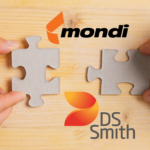Pharmaceutical product packaging accounts for a large part of manufacturers’ Scope 3 emissions, which consider, for example raw material production, manufacturing, and end-of-life disposal. According to Metsä Board studies, fresh fibre paperboard can notably reduce the carbon footprint of pharmaceutical packaging by optimising the paperboard in use.
Assessments* conducted by Metsä Board demonstrate the significant carbon footprint reductions that pharmaceutical manufacturers can achieve by switching from commonly used grades to Metsä Board fresh fibre paperboards. Switching from a solid bleached board (SBB) to Metsä Board folding boxboard can reduce the carbon footprint of packaging by over 50%, and replacing white lined chipboard (WLC) with Metsä Board folding boxboard can result in a 60% reduction or even higher. These assessments have been verified by IVL Swedish Environmental Research Institute. The technical background report and the verification statement are available on Metsä Board’s website.
The lower carbon footprint of Metsä Board’s folding boxboards, compared to the above mentioned boards, is due to the use of fossil free energy in their production and their lighter weight. However, despite the lighter weight, Metsä Board’s folding boxboards still retain the durability and functional properties of traditional heavier grades.
“As a responsible materials supplier it is our job to provide pharma brand owners with transparent, unbiased information that helps them evaluate packaging materials to make better-informed and sustainable choices to reduce their carbon footprint,” says Anne Uusitalo, Product Safety and Sustainability Director at Metsä Board. Metsä Board provides accurate information about the carbon footprint of its paperboard products and can also provide full life cycle assessments to its customers.
*) Assessments follow procedural and methodological requirements of ISO 14025 and are consistent with ISO 14040 and 14044 standards. The selected system boundary for the study was cradle-to-gate + end-of-life and selected climate change impact methodology was EF3.1 Climate Change – total. Climate change impacts for competing materials utilises data from Sphera LCA for Packaging which seeks to represent general products in the European market. The technical background report and the verification statement are available on Metsä Board’s website.
About Metsa Board
Metsä Board is a producer of lightweight and high-quality folding boxboards, food service boards and white kraftliners. The pure fresh fibres we use in our products are a safe, renewable and recyclable resource, that can be traced back to northern forests. We aim to have completely fossil free mills and raw materials by the end of 2030. We promote a culture of diversity, equality and inclusion.
Metsä Board is listed on the Nasdaq Helsinki. In 2023 our sales totalled EUR 1.9 billion, and we have around 2,300 employees. Metsä Board is part of Metsä Group, whose parent company Metsäliitto Cooperation is owned by over 90,000 Finnish forest owners. The sales of the whole Metsä Group were EUR 6.1 billion.





